
 IJCP Editorial Team
IJCP Editorial Team
Preventing the Spread of Infection: The Importance of Hand Hygiene
In today's world, where infectious diseases pose a constant threat to global health, the significance of hand hygiene cannot be overstated. Proper hand hygiene is a fundamental practice, crucial in preventing the spread of infections and safeguarding public health. By following simple yet effective hand hygiene practices, we can protect ourselves and others from harmful pathogens.
Understanding Hand Contamination
Hand contamination is a critical aspect to consider when discussing the importance of hand hygiene. Our hands come into contact with numerous surfaces throughout the day, which can harbor germs and pathogens. These pathogens can easily transfer to our hands when we touch contaminated objects, use unsanitary restroom facilities, or come into contact with animals. Additionally, respiratory droplets expelled during coughing or sneezing can settle on surfaces and be transferred through touch. If we fail to wash our hands properly, these germs can persist on our hands and be easily spread to others, leading to the transmission of infectious diseases. Understanding the potential sources of hand contamination highlights the importance of practicing thorough hand hygiene to reduce the risk of illness and maintain optimal health.
Importance of Washing Hands
Regular hand washing and hygiene acts as preventive measure, reducing the occurrence of illnesses and curbing the spread of infections to others. Hand washing with soap and clean-running water effectively eliminates germs and prevents infections. Washing hands with soap is particularly effective due to the following reasons:
• People unconsciously touch their eyes, nose, and mouth, providing an entry point for germs. When hands are contaminated, these germs can easily enter the body and cause illness.
• Unwashed hands can transfer germs to food and beverages during preparation or consumption. Certain food and drinks create ideal conditions for germs to multiply, potentially leading to sickness when consumed.
• Germs from unwashed hands can be transferred to various objects such as handrails, tabletops, or toys. When another person touches these contaminated surfaces, the germs can be transmitted to their hands.
Clinical studies have proven that removing germs through proper handwashing can significantly reduce the risk of diarrhea, respiratory infections, skin infections, and eye infections.
The Basics of Proper Hand Hygiene
Proper hand hygiene involves two essential practices: handwashing with soap and water and using alcohol-based hand sanitizers when soap and water are not readily available.
Hand washing using soap and water: Using soap and water is essential during handwashing, as studies have shown that soaps are more effective in removing germs than washing hands with water alone. Therefore, incorporating soap into handwashing practices is highly recommended for optimal hygiene. The Centers for Disease Control and Prevention (CDC) recommends following these steps for effective handwashing:
• Wet your hands with clean, running water.
• Apply soap and lather well, covering all surfaces of your hands.
• Scrub your hands for at least 20 seconds, paying attention to the back of your hands, between your fingers, and under your nails.
• Rinse your hands thoroughly under running water.
• Dry your hands with a clean towel or air dry them.
The Role of Hand Sanitizers: Alcohol-based hand sanitizers can be used as an alternative to handwashing when soap and water are unavailable. They effectively kill many types of germs, including bacteria and viruses. When using hand sanitizers, it should be applied a sufficient amount (as directed on the product label) and rubbed all over your hands until dry. However, it is important to note that hand sanitizers are not effective against all types of germs, such as certain viruses like norovirus and Clostridium difficile.
When to Practice Hand Hygiene
Hand hygiene should be practiced at critical moments throughout the day to reduce the risk of infection transmission. These moments include:
• Before and after preparing or handling food
• Before eating or drinking
• After using the restroom or changing diapers
• Before and after caring for someone who is sick
• After coughing, sneezing, or blowing your nose
• After touching surfaces in public areas (e.g., doorknobs, handrails)
• After handling garbage or waste materials
• After handling pets
• When return home from outside
Public education and awareness for hand hygiene
Educating people about handwashing is crucial for promoting individual and community health. Handwashing education has shown positive outcomes, including reduced diarrhea cases and respiratory illnesses within the general population. It also protects immune-compromised individuals and improves school attendance by decreasing gastrointestinal diseases among children.
During the COVID-19 pandemic, proper hand hygiene has played an essential role in preventing the further spread of the virus. Handwashing with soap and water, along with the use of alcohol-based hand sanitizers, has been recommended as effective measures to curb the transmission of the virus.
Health organizations, educational institutions, and community leaders play a vital role in spreading awareness about the importance of hand hygiene. Initiatives such as hand hygiene campaigns, educational programs, and the placement of hand sanitizers in public places can significantly contribute to improving hand hygiene practices and reducing the spread of infections.

IJCP Editorial Team
Comprising seasoned professionals and experts from the medical field, the IJCP editorial team is dedicated to delivering timely and accurate content and thriving to provide attention-grabbing information for the readers. What sets them apart are their diverse expertise, spanning academia, research, and clinical practice, and their dedication to upholding the highest standards of quality and integrity. With a wealth of experience and a commitment to excellence, the IJCP editorial team strives to provide valuable perspectives, the latest trends, and in-depth analyses across various medical domains, all in a way that keeps you interested and engaged.

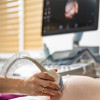

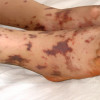



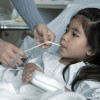

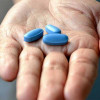





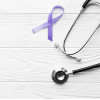
.jp.jpg)



Please login to comment on this article